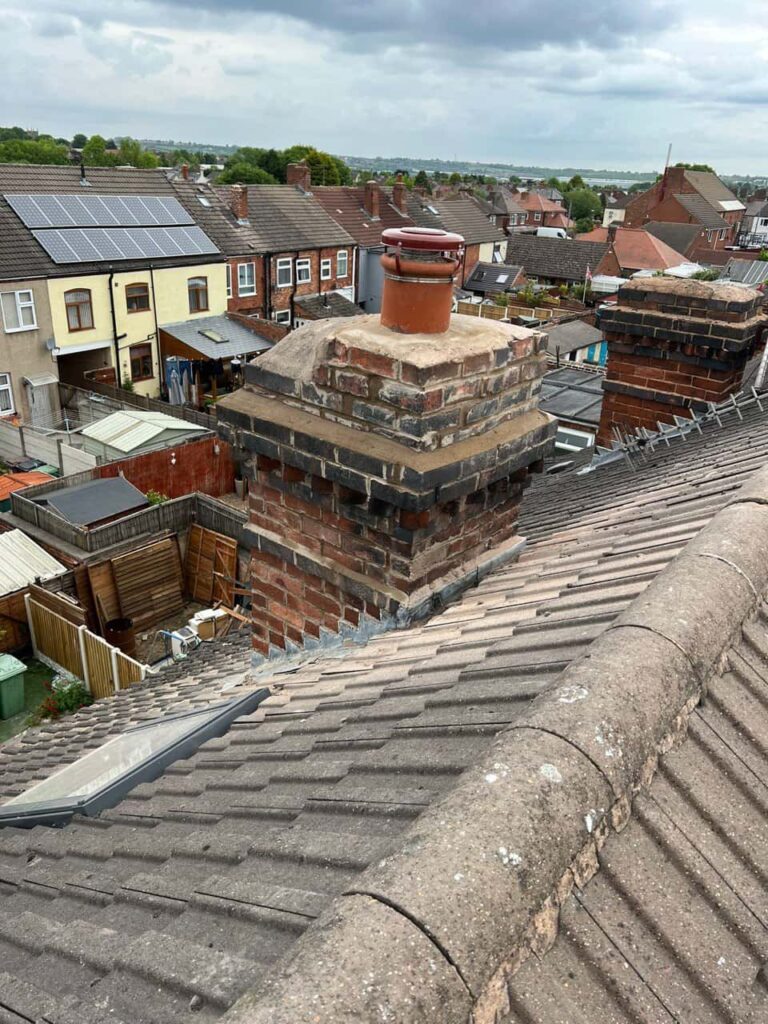Introduction: At Darlaston Roofing Repairs, we understand that roof repairs are essential for maintaining the integrity and safety of your home. However, it’s also important to consider the environmental impact of these repairs. From the materials used to the disposal of old roofing, each process step can have significant environmental consequences. In this blog post, we’ll explore the environmental impact of roof repairs and provide tips on how to make your roofing projects more eco-friendly.
The Environmental Impact of Roofing Materials
The choice of roofing materials plays a significant role in the environmental footprint of roof repairs. For instance, traditional materials such as asphalt shingles are derived from petroleum products and contribute to greenhouse gas emissions during production. Additionally, these materials often end up in landfills at the end of their life cycle, contributing to environmental degradation.
Sustainable Roofing Options
- Metal Roofing: Metal roofs are durable and recyclable, making them a more sustainable option. They can be made from recycled materials and, at the end of their life, can be recycled again.
- Clay and Concrete Tiles: These materials are long-lasting and can be recycled. They also have a lower environmental impact during production compared to asphalt shingles.
- Slate: A natural stone product, slate is highly durable and can last over a century. Its production has a lower environmental impact and can be reclaimed and reused.
- Recycled Shingles: Some manufacturers produce shingles made from recycled materials, such as plastic and rubber, reducing the need for new raw materials.
Energy Efficiency and Insulation
Improving your home’s energy efficiency is another way to reduce the environmental impact of roof repairs. A well-insulated roof can help regulate indoor temperatures, reducing the need for heating and cooling and thereby lowering energy consumption and greenhouse gas emissions.
Tips for Improving Roof Insulation
- Install Reflective Roofing: Reflective or cool roofing materials can reflect more sunlight and absorb less heat, keeping your home cooler and reducing the need for air conditioning.
- Add Insulation: Proper insulation in your attic and roof space can significantly reduce heat loss in winter and keep your home cooler in summer.
- Use Energy-Efficient Underlayment: Consider using underlayment materials designed to enhance the energy efficiency of your roof.
Reducing Waste During Roof Repairs
Roof repairs often generate significant waste, from old roofing materials to packaging for new products. Reducing this waste is crucial for minimising the environmental impact of your roofing project.
Waste Reduction Strategies
- Recycle Old Materials: Many roofing materials, including metal, asphalt shingles, and tiles, can be recycled. Ensure your old roofing materials are sent to a recycling facility rather than a landfill.
- Reuse Materials: If possible, reuse any roofing materials in good condition. Undamaged tiles or metal sheets can often be reused.
- Minimise Packaging Waste: Choose roofing products with minimal packaging or packaging made from recyclable materials.
- Hire a Responsible Contractor: Work with a roofing contractor committed to sustainable practices and waste reduction.
The Role of Eco-Friendly Roofing Practices
Adopting eco-friendly roofing practices can significantly reduce the environmental impact of roof repairs. This includes everything from using sustainable materials to implementing energy-efficient solutions and reducing waste.
Eco-Friendly Roofing Practices
- Choose Sustainable Materials: Opt for roofing materials that have a lower environmental impact and are recyclable or made from recycled content.
- Implement Energy-Efficient Solutions: Improve your roof’s energy efficiency through insulation, reflective materials, and proper ventilation.
- Reduce Waste: Recycle or reuse old materials and choose products with minimal or recyclable packaging.
- Hire Eco-Conscious Contractors: Partner with roofing contractors prioritising sustainability and eco-friendly practices.
Conclusion: Roof repairs are essential for maintaining your home, but they don’t have to be costly for the environment. By choosing sustainable materials, improving energy efficiency, and reducing waste, you can minimise the environmental impact of your roofing projects.
Call us on: 0121 312 1686
Click here to find out more about Darlaston Roofing Repairs
Click here to complete our contact form and see how we can help you with your roofing needs.

